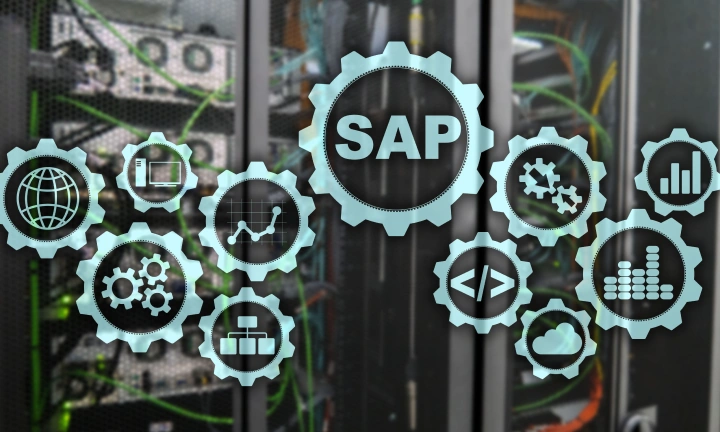Businesses across the globe are planning to migrate from on-premise to cloud. This is not a huge surprise as cloud computing has emerged as a reliable solution to manage and store big data.
Cloud computing offers a plethora of benefits, from reduced TCO to pay as per use model. A majority of the new ventures are turning their back from SAP ECC infrastructure because of usage limitations. With cloud computing, consumers can achieve desired results within a short time frame.
Cloud migration is budget-friendly as you pay through subscriptions based on the model you choose. SAP Implementation partner helps businesses to go online. A versatile and economic option!
According to a recent survey, providing data access from a remote location is the prime reason for cloud migration. So, in order to leverage the decision-making strategy, here are the top 5 things that are required to know before choosing an implementation partner.
Assessing the Right Type of Cloud
Before adopting cloud computing, make sure to analyze the existing IT environment for building strategic objectives. There are three types of cloud: Private, hybrid, or public. Each of the types has its features, so go through each type in detail before jumping on to the conclusion.
Private Cloud
A private cloud is a computing service delivered either on the internet or a private internal network. Plus it is served for limited people instead of the public. It is also widely known as the corporate cloud as it offers business benefits, like elasticity, automated service, and improved scalability.
Public Cloud
The public cloud is an alternative app development approach to traditional on-premise IT structure. In this basic version of the cloud computing model, a third-party vendor offers scalable, on-demand IT reserves and delivers them to the end-users through a network connection; this can be a dedicated network or public internet.
Some of the public cloud providers propose free resources and charge for added features by a pay-per-use model.
Hybrid Cloud
As the name suggests, it is a fine composition of the third-party public cloud, on-premises, and private cloud. These platforms are orchestrated in a way to maximize business benefits in a shorter time frame.
Hybrid cloud allows businesses to deploy workloads in private IT infrastructure or public cloud and switch them as the costs and business needs change. Enhanced flexibility and more data deploying options is an added advantage of hybrid cloud.
While looking for the best option, do not forget to consider storage, extensions, bandwidth, and features. Choose the one that fits your business requirements at affordable prices.
Pricing
Before implementing any system, the business should calculate its resources and the Total Cost of Ownership (TCO). Not every service provider will offer pay per use or subscription tariff model. So, knowing if you are paying the right amount is important.
However, going for a subscription model is a safer alternative as it is transparent and budget-friendly. Businesses should be aware of the current market rates and for some cloud platforms cost of integration and implementation may be slightly elevated than expected. So, while planning the budget include the declared cost per user and cost per usage.
Prices may slightly differ due to different service providers, so keep your stats updated regularly.
Extra tip:
- While choosing an SAP S/4HANA Migration, make sure to calculate the ownership cost and your business funding to play it safe.
- Pay the amount as per benefits, bandwidth, storage space, and extensions. Only pay for the service that you use, evaluate your business outputs for a clearer view.
Reliability
A reliable service provider is of utmost importance before instilling time and money in the integration and implementation process. Running a business means deploying huge chunks of data daily and a service provider helps in delivering the right bandwidth. Choose the one that has a pay-per-use model.
Analyze and assess the compatibility of language, technical and governance standards of the probable provider to your business internal parameters. Make sure your service provider is a certified partner and has government authorizations. A reliable cloud partner must have a great understanding of how an app works but also how multiple components integrate.
A service provider needs to assure 24×7 software support, must take prompt actions, and ensure the safety of data. Most of the cloud service providers are great at securing data and resolving routine issues. However, check the probable provider’s rating and reviews for more information.
It is said that in the year 2021, cloud data centers will process 94% of the routine workload.
Security
Security is one of the biggest concerns for businesses shifting to cloud-based services, as fear of data loss and leakage can cause serious issues. Cloud adoption is undoubtedly the safest alternative for storing and utilizing data because of its extended features and types.
Businesses can employ private cloud adoption for safe and smooth data allocation. In a private cloud, only limited users have access to private internal networks or the internet; so your data stays more secure.
It is important to consult a service provider that can access and address any issues regarding software in no time, plus data stays safe in the cloud.
Time
The last important factor to consider is the time period needed for data migration. Calculate the time invested for testing before and after data migration. Since your business is getting ready for the huge shift, consider the availability of aids, application design, efficiency, and more.
These things do tend to get impeded because of security problems, low productivity, and compliance issues. It’s important to have an approximate estimation to minimize overhead costs and a static budget.
Businesses can draw an estimated budget and stick to it for increased ROI by knowing the time needed for data migration.
Benefits of Cloud Adoption
New Updated Software
With SaaS, enterprises need the latest version of the application to run the business. So, all the updated versions are processed to consumers as soon as it is available in the market. Instant upgrades lay new functionalities and features into the employee’s hand to make them more effective and productive.
Flexible Pricing
The price of cloud computing is way more flexible than its traditional counterparts. Businesses only need the commission, so only pay for infrastructure capacity and server.
More capacity is powered when needed and then de-provisioned as the requirement slows down. Traditional counterparts require buying capacity for peak times and let it sit idle when the requirement is low.
Enhanced Mobility
Application and data reach every employee without any location restriction. Employees can work from remote locations using smartphones to check customers out, work in the field, visiting customers at their residence, and more.
Reduced Expenses
In the recession period, when companies need to cut backs to maintain balance, cloud computing proposes a flexible price structure to limit exposure. Reduced expenses help businesses to thrive in tough times.
Conclusion
Cloud computing is a cost-effective option as it does not require huge investments to build data centers and purchasing equipment. Businesses are adopting cloud services as the investment is low compared to traditional computing. In traditional computing, companies need to invest millions before getting desired results, whereas cloud computing makes the process budget-friendly and effective.





